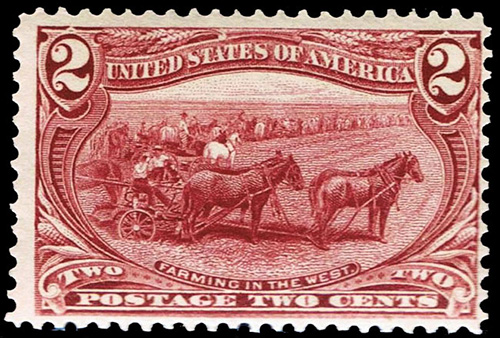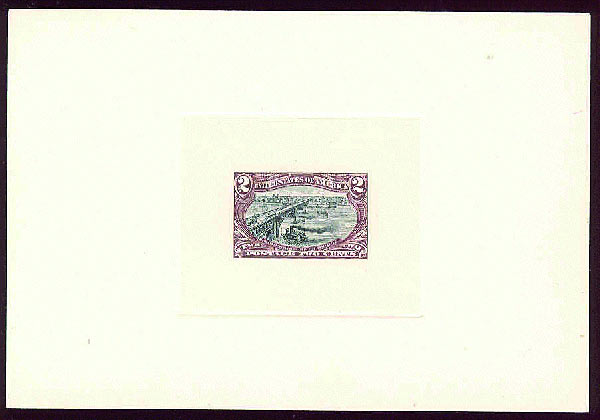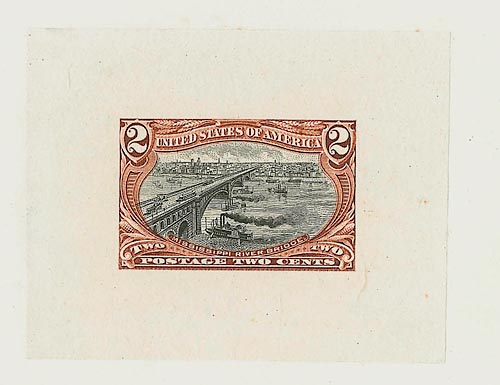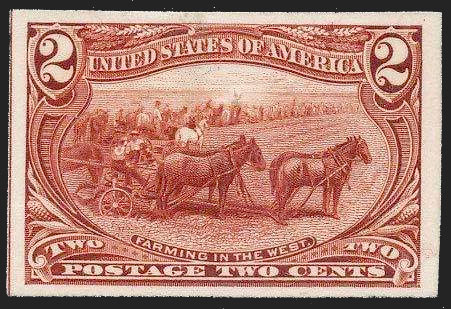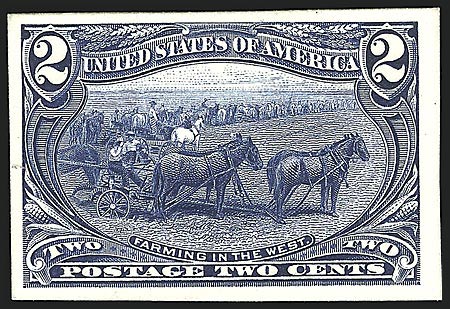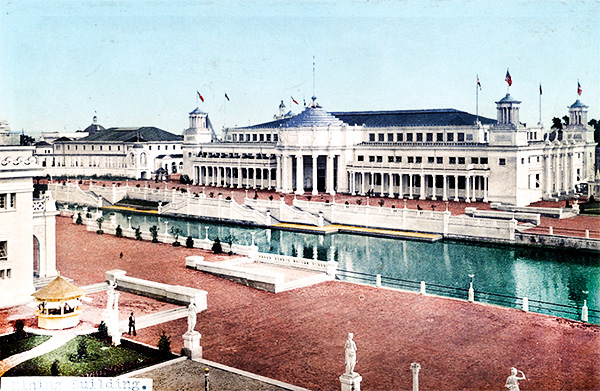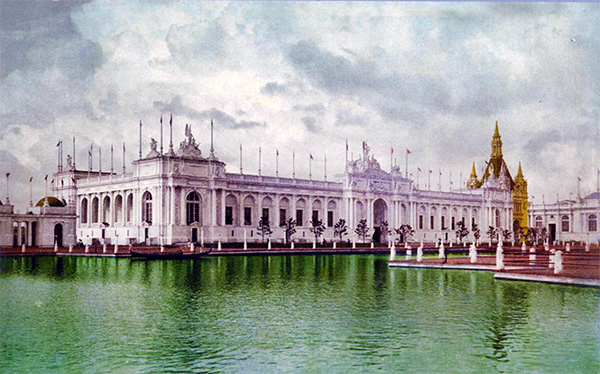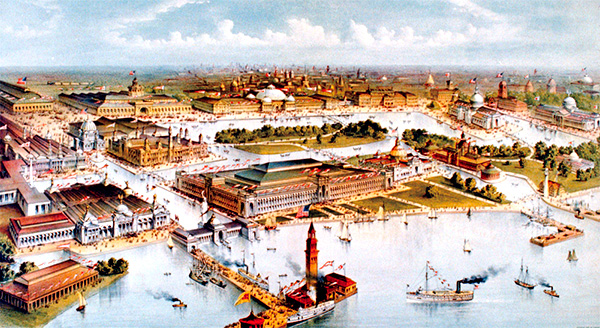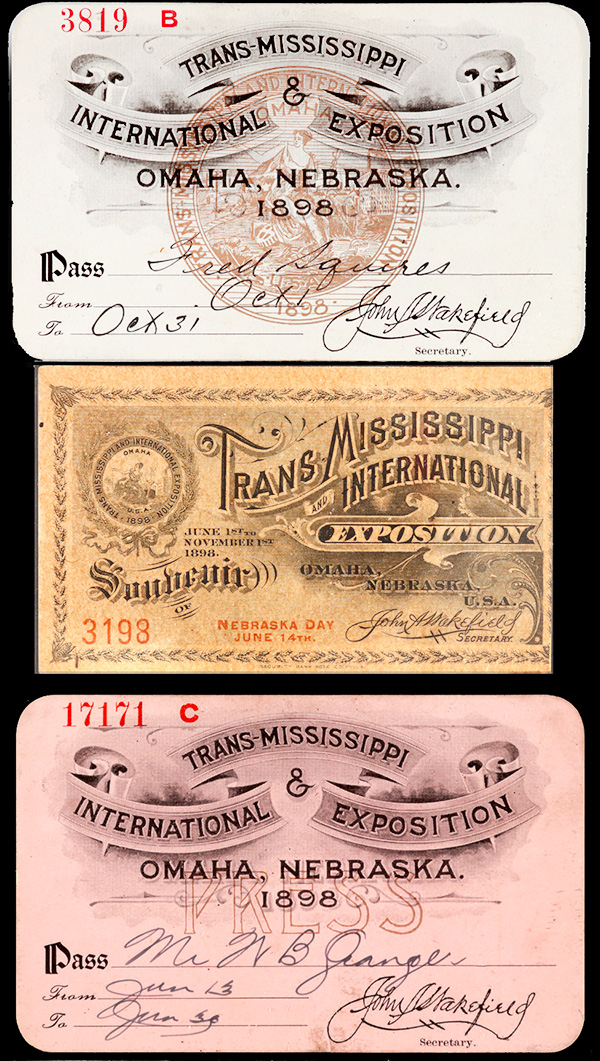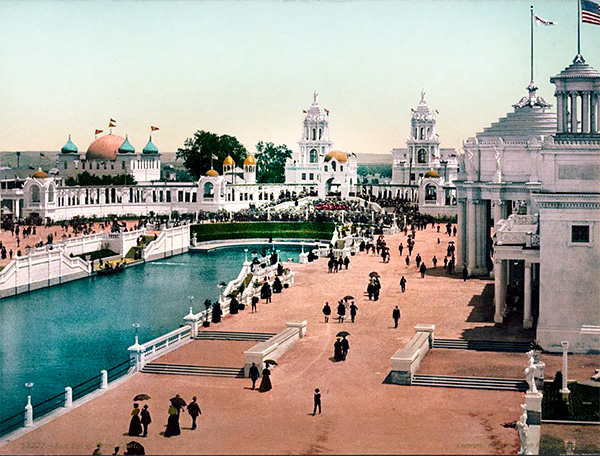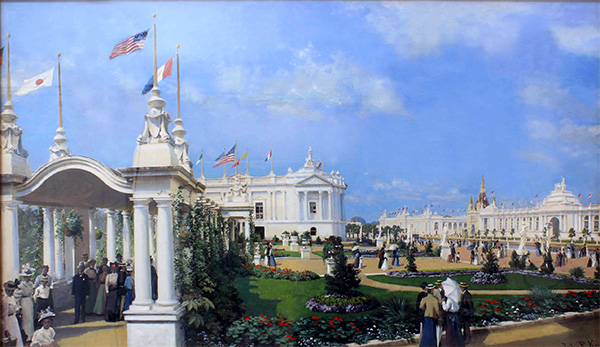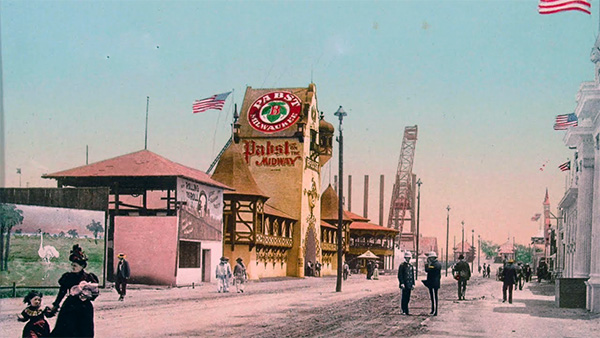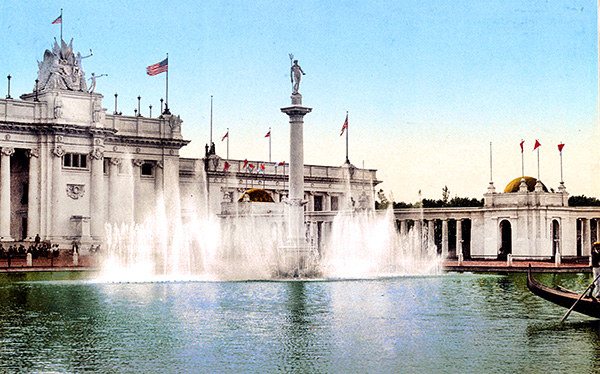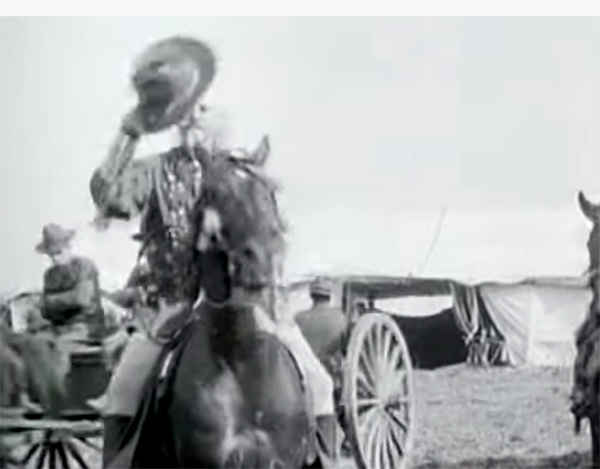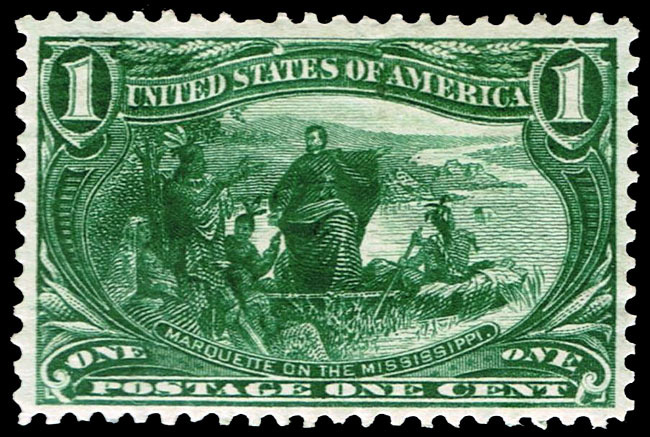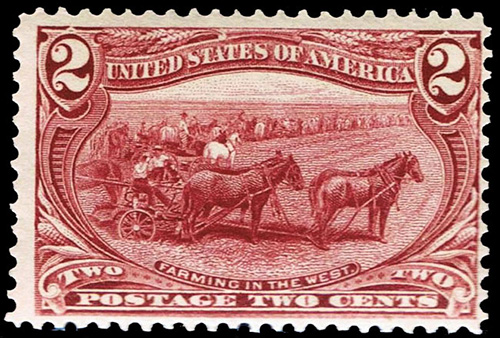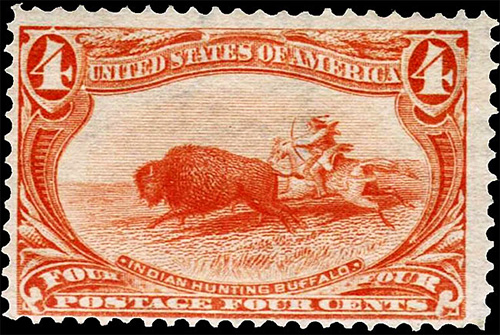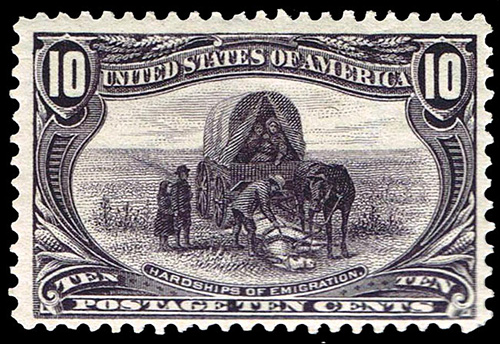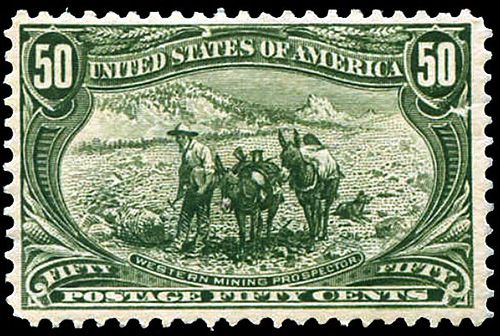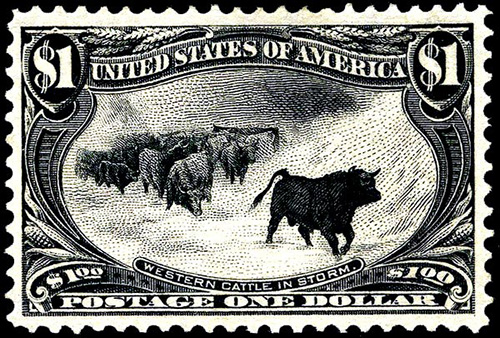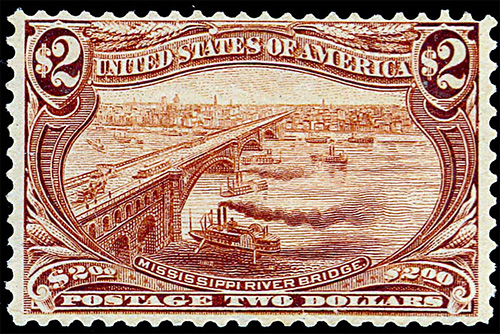Basic Info
2¢
Copper red, brown red, light brown red
Printing Method: Engraved
Subject: Farming in the West
Number issued: 159, 720, 800
Perforations: P12
Watermark: Double Line USPS
Scott #: 286
Issued: June 17th, 1898
Value of #286
Used
25¢ - $1
No postmark with gum (MH)
$2.50 - $6.50
Full perfect gum, no postmark
no trace of stamp hinge mark (MNH)
$7.50 - $16
First Day Cover
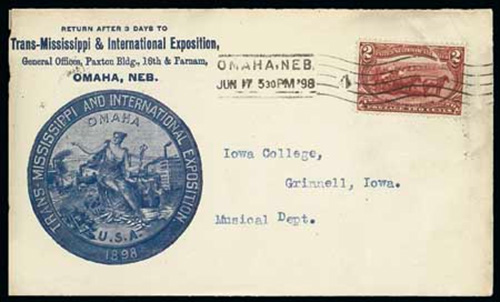
First day cover, June 17th, 1898
The only known FDC from the exposition
#286 Plate #'s
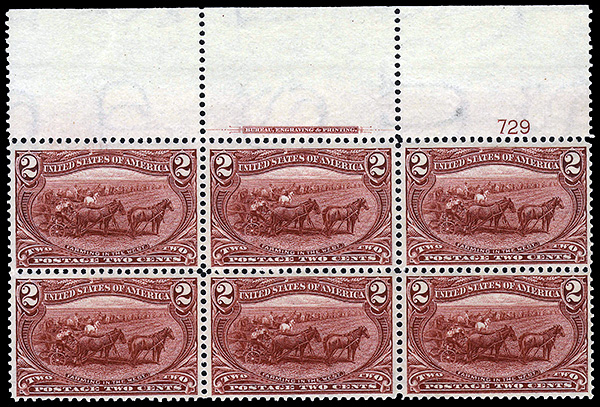
#286 was issued with the following plate #'s
597, 608, 610-611, 616, 619, 621-633, 638-642, 644-681, 683-708, 713-722, 724-729, 732-735, 737-741, 749-752
A pane of #286
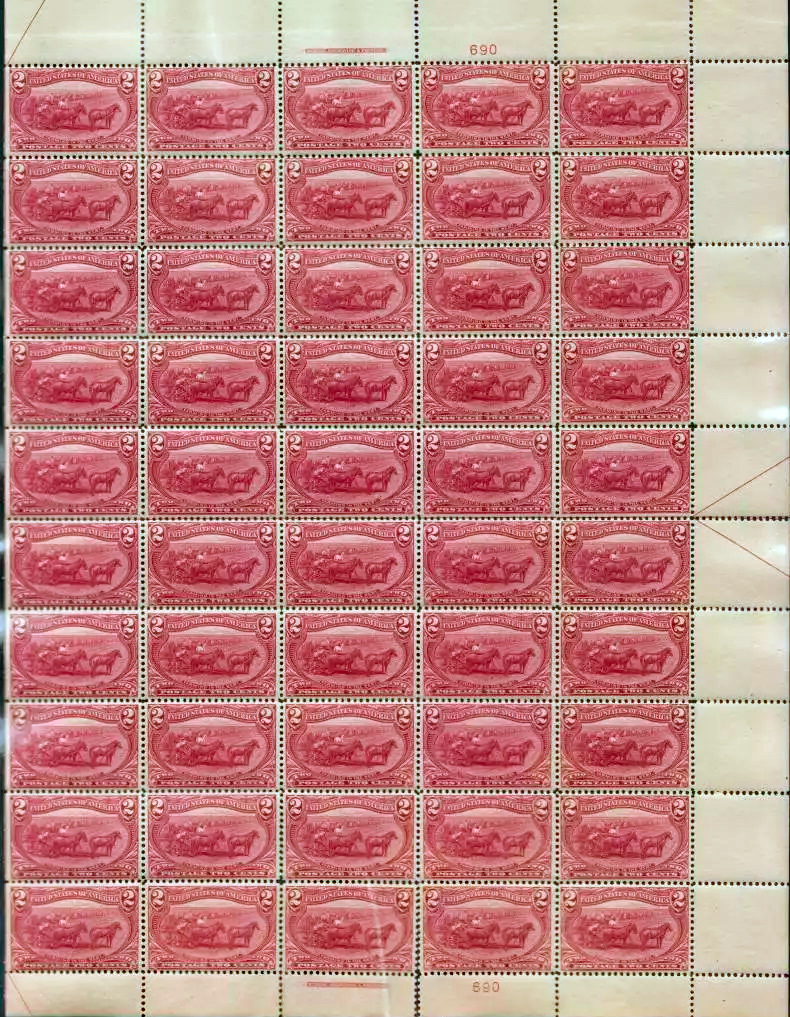
A pane of #286. Each pane had 50 stamps, there were two panes to a sheet of 100
Almost a bi-color stamp
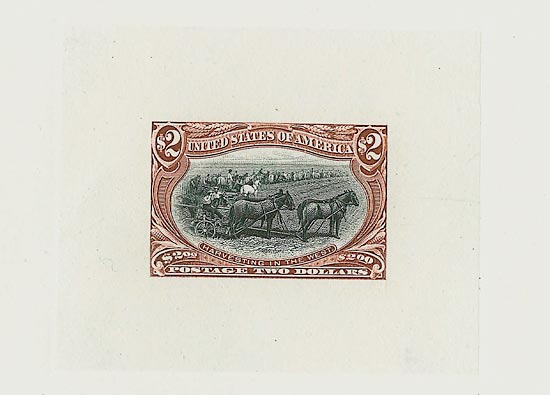
It was intended to print the Trans-Mississippi issue with a black vignette and a frame in color. The bi-color idea had to be abandoned because of the fact that the Spanish American War, which broke out in April, 1898, necessitated the printing of enormous quantities of revenue stamps and the facilities of the Bureau were taxed to the utmost . The time and manpower needed for the printing of stamps in two colors could not be spared and it was necessary for the Bureau to abandon the proposed bi-color stamps in favor of stamps of single colors.
The 2¢ vignette was originally planned to be on the $2 denomination. However, the purpose of the exposition was to increase to the attraction of investing in the farming in the west and the more popular 2¢ stamp would have a wider audience of the rural scene,
The Inspiration for the Design
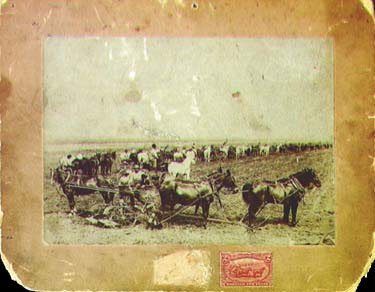
For the vignette was based on this photograph, the original copy is shown above.
The photograph from which the design was made was taken a few miles from the town
of Amenia, North Dakota. The men depicted in the photograph are the first living
men to be shown on a postage stamp.
It was taken in 1893 on the Amenia & Sharon Land Company's Fargo, North Dakota 'bonanza farm'. A line of plows drawn by mule teams going into the distance, are apparently plowing a stubble field. In the foreground, Ed Nybakken is seated on a two-bottom plow drawn by four mules. His hand is in the air, touching the brim of his hat, and blocking his face. Behind him seated in a two-wheel buggy with a dog beside him, is field boss Elihu Barber.
Behind Barber is foreman Sam White. He is standing in a buggy hitched to two horses, and is looking away from the camera. Ed for years bemoaned the puff of the wind that hid his face from the camera, on the other hand the firm, very proud of the stamp, purchased thousands and used them on their mail well into the 20th century.
The team photographed included 61 horses and their drivers, many farmers, on seeing this stamp, were incredulous as to the amount of equipment, however this was the practice of the bonanza farms of North Dakota.
Essays and Proofs
The Omaha World’s Fair

The Trans-Mississippi Exposition was a World’s Fair hosted in Omaha, NE from June 1 to November 1 of 1898. The purpose of the Omaha World’s Fair was to exemplify the fertility and potential of Western farming and manufacturing as a definite pathway to financial success. It attracted 2.6 million visitors.
A two-thousand foot-long lagoon designed to resemble Venetian canals hosted gondola rides as a whimsical form of transportation throughout the fair. Stately trees and lush grass plots lined artistically crafted walking paths, illuminated by electric lights. Bright white building designed in Renaissance style reflected ancient Greek and Roman influences and possessed strenuous constraints on color, scale and height. All was built out of cheap materials or designed not to last, at the end of the exposition it was all removed.
There were two great attractions during the show, the first being President McKinley's speech which attracted 100,000 people to the plaza. The other was Buffalo Bill's Wild West Show, a video of which can be viewed below.
